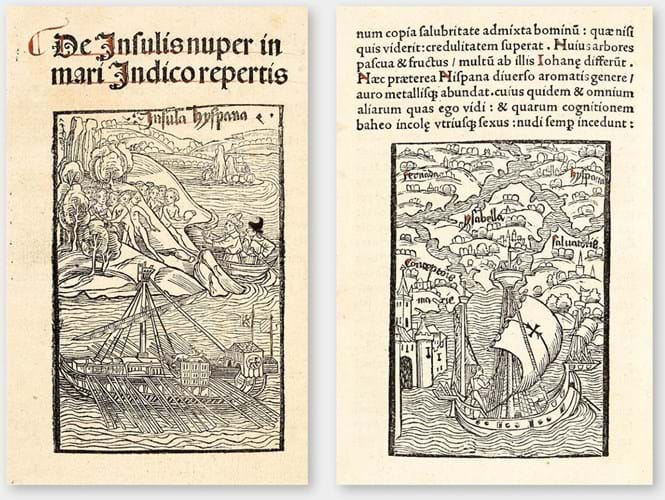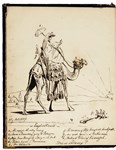
Part of the opening paragraph of a letter – sold for $620,000 (£462,000) in a Bonhams New York (25/20/12% buyer’s premium) sale of September 26 – that must be ranked among the more historically significant ever written.
In simple terms, this is Christopher Columbus telling his sponsors and backers, Ferdinand and Isabella of Spain, that he had found America.
Except, he hadn’t, and never did set foot on either the North or South American continents. The Bahamas island he had found after a three-week voyage from the Spanish port of Palos most certainly forms part of the New World, but what he had really been looking for and thought he might be close to finding was something else entirely. Columbus had been trying find a way to get access to the riches of China and the East Indies by sailing west.
European journey
As many as 17, perhaps 19 printed editions of what soon became known as the ‘Columbus Letter’ were printed in the final few years of the 15th century – first in Spanish in Barcelona and then Valladolid, then in Rome, in Latin. Antwerp, Basel, Paris, Strasbourg and Florence editions soon followed, spreading the news.
Of the very first, printed in Barcelona in early April 1493, there is just one recorded example – sold by Quaritch in 1892 to the New York Public Library – and many of the other survivors have long been in institutional collections.
There are, however, relatively large numbers of surviving copies of an edition issued by Johann Bergmann de Olpe of Basel in April 1494, and it was one of those which sold last month in New York. Running to eight pages, and only the second to feature illustrations, it contains six woodcuts – two of which are reproduced above.
That shown beneath the title De insulis nuper in mari Indico repertis… shows Columbus and a companion landing on ‘Insula hyspana’ (San Domingo) and proffering gifts to the startled inhabitants.
In the foreground is a very large galley, far removed from the reality of the Columbus expedition’s much smaller ships, but both this and a vessel seen in another of the edition’s illustrations were presumably supplied from stock woodcut images.
The other page reproduced here shows Columbus’ ships, the Santa Maria, Nina and Pinta among the West Indian islands that he called Feranda, Hyspana, Ysabella, Salutorie and Conceptionis Maria.
This version offered in New York was bound with a copy of a drama by Carlo Verardi that celebrates the capture of Granada during the reign of Ferdinand and Isabella (like a number of recorded copies of this edition).
Just three examples of the ‘Columbus Letter’ have come to auction in recent times. In 1989, a 1494 Basel edition made $70,000 as a Library of Congress duplicate. Two examples of Stephan Plannck’s 1493 Roman edition were sold in the early 1990s, including one that made at a record $400,000 but was later found to have been removed from an Italian municipal library.
Just recently came news of another stolen copy. Acquired in good faith in the trade in 2004, at $875,000, it was subsequently identified as one removed from the Vatican library and has been returned by the US collector’s widow.














